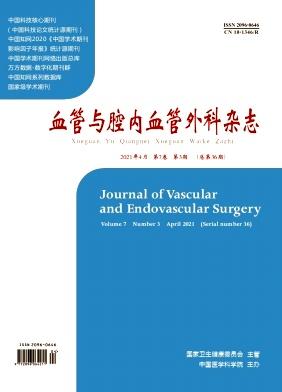The effect of venoplasty and stent implantation in patients with chronic venous symptoms following deep vein thrombosis in iliofemoral segment
引用次数: 0
Abstract
Deep vein thrombosis (DVT) is a common vascular condition that affects 1 to 3 per 1,000 persons per year. Proximal thrombosis (including iliac arteries) is at higher risk for postthrombotic syndrome (PTS) . Therefore, in the present study, we investigated the effect of venoplasty by stent placement in patients with chronic venous symptoms following DVT in the iliofemoral segment. In this crosssectional study, patients with an age range of 20 to 70 years who presented with chronic symptoms of iliofemoral obstructive venous lesion following DVT were included in the study if satisfied. They were placed under local anesthesia with lidocaine and, if necessary, by venous sedation under lower extremity venography by catheter with popliteal vein surgery on the same side and placement of a sheet . Variables related to before the intervention and six months after the intervention were reviewed, recorded and analyzed . Among 24 patients participating in the study, 70.8% were male and 29.2% were female with a mean age of 51.42 ± 8.27 years. There was a significant difference in pain and wound condition before and 6 months after the intervention (P <0.001). After the intervention, 58.3% of patients were in painless condition and the frequency of patients without wounds increased from 12.5% to 66.7%. Edema changes were not significant (P = 0.29). Stent implantation in patients with chronic venous symptoms following DVT in the iliofemoral segment reduces pain and wound healing and is an effective, usable and practical method.静脉成形术及支架植入术对髂股段深静脉血栓形成后慢性静脉症状患者的影响
深静脉血栓形成(DVT)是一种常见的血管疾病,每年每1,000人中有1至3人患病。近端血栓形成(包括髂动脉)发生血栓后综合征(PTS)的风险较高。因此,在本研究中,我们研究了通过支架置入术对髂股段深静脉血栓形成后慢性静脉症状患者的影响。在这项横断面研究中,年龄在20至70岁之间,在DVT后出现髂股梗阻性静脉病变慢性症状的患者被纳入研究,如果满意的话。他们在利多卡因局部麻醉下,如有必要,在同侧腘静脉手术下进行静脉麻醉,并放置一张纸。对干预前和干预后6个月的相关变量进行回顾、记录和分析。参与研究的24例患者中,男性占70.8%,女性占29.2%,平均年龄为51.42±8.27岁。干预前和干预后6个月疼痛和伤口状况差异有统计学意义(P <0.001)。干预后,58.3%的患者处于无痛状态,无伤口患者的发生率从12.5%增加到66.7%。水肿变化不显著(P = 0.29)。对于髂股段深静脉血栓形成后出现慢性静脉症状的患者,支架植入术可减轻疼痛和伤口愈合,是一种有效、可用和实用的方法。
本文章由计算机程序翻译,如有差异,请以英文原文为准。
求助全文
约1分钟内获得全文
求助全文

 求助内容:
求助内容: 应助结果提醒方式:
应助结果提醒方式:


